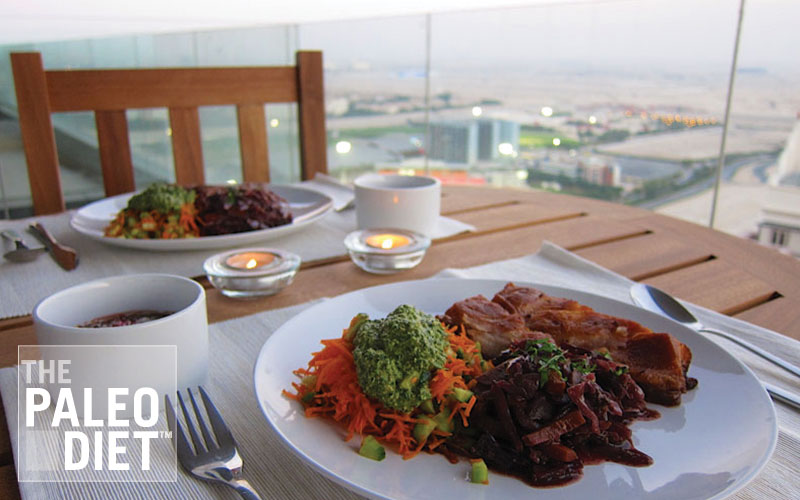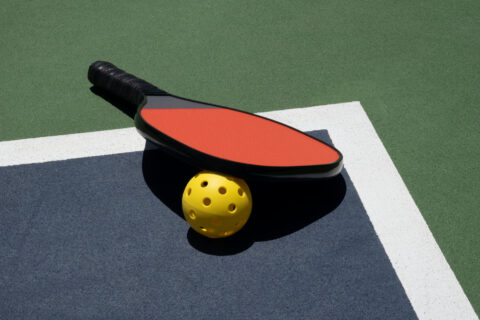When it comes to figuring out how you can live healthier and make better food choices, everyone from your doctor to your dog walker has an opinion. From pills and power foods to prescriptions and planned meals, it’s a never-ending cycle. The next best thing that will somehow create a perfect you.
Unfortunately, however well-meaning their opinion it is well … meaningless. You are the only person who can ultimately decide what works for you to perform at your best and feel your healthiest.
Here are several things to consider when deciding whether Paleo is the right lifestyle for you.
What Did They Eat? Caveman Diet Basics
60 million years ago, the earliest primates subsisted on fruit, leaves and insects – a mainly vegetarian diet. Just 2.6 million years ago, early humans started using tools and fire and transitioned to the hunter-gatherer diet.
Paleolithic humans generally consumed three times the amount of produce an average American eats. According to studies, they also ate more fiber, protein, unsaturated fats, natural vitamins and minerals, more omega-3 fatty acids and significantly less saturated fat and sodium. That’s not to say they were paragons of health back then. They suffered from parasites, infectious diseases and hardening of the arteries.
Here’s a look at key tips to consider whether it’s the right diet for you:
1. You should try the Caveman Diet if you are celiac or gluten-intolerant.
First, check if you’re actually gluten-intolerant, celiac or just reacting to a trigger word. There are two ways to know for certain if you are gluten-intolerant: blood tests or an elimination-reintegration diet. The elimination-reintegration diet you can do yourself, at home. Essentially, strictly and completely remove all traces of a particular food or ingredient from your diet if you suspect you may have a food allergy.
2. You should not try the Caveman Diet just because gluten-free is the new standing desk.
It’s not a cure-all for everything that ails you. Committing to eating Paleo is difficult and shouldn’t just be followed because a TV doctor said it was great. It requires a total lifestyle change and mindful consideration of your food intake and attention to your overall health.
3. You should try the Caveman Diet if you’re already healthy.
It’s a lifestyle that helps maintain your current health with additional benefits. Such additional benefits could be increasing lean muscle mass, developing more efficient digestion and reducing overall body fat.
4. You should not try the Caveman Diet to shed weight quickly.
Paleo is a lifestyle, because of the amount of commitment it takes to see results – and many of the results aren’t externally visible. This isn’t a crash diet or a magic fix. Remember that each healthy choice is just one part of the process of change.
Getting Started With the Caveman Diet

The Paleo lifestyle is an answer to the claim that our modern Western diet isn’t healthy. Here are small changes you can make on a daily basis to support what your body really needs:
-
Eat fresh food when possible. Choose fresh vegetables or fruits to include with at least one meal a day.
-
Consider swapping out one processed food item for a fresh substitute at your next meal.
-
Get some exercise and get your blood flowing – go for a walk, even if it’s just around the block.
-
Reset your biological clock by setting your alarm to wake you up 15 minutes earlier. Make an effort to start winding down for bed 15 minutes earlier. Every week, you can add another increment of time until you’re rising with the sun and going to sleep with the sunset (or as close as you can comfortably get).
Paleo Eating Next Steps: What to Eat and Avoid
When you’re comfortable with the small changes you’ve made toward eating the Caveman Diet, you can start a more systematic meat and produce-based diet.
-
The ‘whole animal’ approach to meat-eating includes eating organs, bone marrow and cartilage.
-
Include animal products such as eggs.
-
fresh vegetables and fruits.
-
Raw nuts and seeds.
-
Healthy fats such as coconut oil and avocado.
Things like grains, legumes, processed oils, and dairy are off-limits in the Caveman Diet. Returning to a diet similar to the humans of the Paleolithic era will provide more calories and nutrients, increase fertility and decrease mortality. When we seek to emulate cavemen nutrition we can begin to out-perform the Neanderthals of this century.
This article has been edited and condensed.
Demmy James is a fitness buff, strength and conditioning specialist and content contributor with Muscle & Strength. He is constantly looking to inspire and motivate through his writings. Connect with @Muscle_Strength on Twitter.
© YFS Magazine. All Rights Reserved. Copying prohibited. All material is protected by U.S. and international copyright laws. Unauthorized reproduction or distribution of this material is prohibited. Sharing of this material under Attribution-NonCommercial-NoDerivatives 4.0 International terms, listed here, is permitted.







